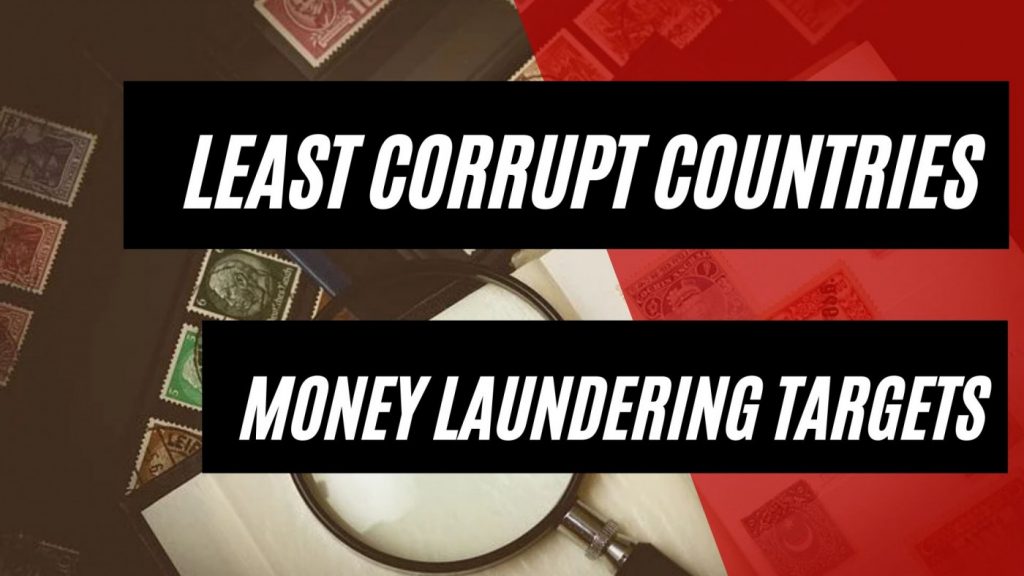With the issue of “dirty money” seemingly being worldwide, it comes as no surprise that even the least corrupt countries come face-to-face with the problem. Money laundering spares no countries and seems to find its way into less corrupt nations, even more so than others. Why is this, and how is it so?
Table of Contents
- Key Takeaways
- The Corruption Index
- Disparity Between The Most Corrupt Countries And Least Corrupt Countries
- No One Is Free From Corruption
- Corruption and Money Laundering
- The Cross-National Effects of Money Laundering
- The Private Sector Stimulates Corruption
- Summary
Key Takeaways
- The Corruption Perceptions Index (CPI) is an index that scores countries based on their levels of corruption and determines the most corrupt countries and least corrupt countries.
- The CPI is issued by Transparency International.
- Over the past decade, 22 countries have shown a significant decrease in levels of corruption, according to the CPI.
- Even countries appearing to have low levels of corruption are not completely free of it. In contrary, high CPI scoring nations show the “worst” levels of private financial corruption (i.e., the most corrupt countries).
- Even countries within the EU are facing serious money laundering issues and are attempting to solve them with evernew policies to control money laundering over the borders.
The Corruption Index
The Corruption Perceptions Index (CPI) is a scale that scores nations based on their levels of corruption from 0-100, with 0 indicating high levels of corruption and 100 indicating low. This index, or the associated report respectively, is published every year by Transparency International. Transparency International is an organization seeking to locate and stop fraudulent behavior and other forms of corruption.
As of 2020, the CPI found that a group of countries improved their scores by “significant margins” over the past eight years, including 22 nations worldwide. For the rest of the 180 countries included in the report, the results fail to show any improvements, instead of exemplifying the distressing rates of corruption that cannot be stopped. If any, changes are slight and minimal. In this same period of eight years, 21 nations showed an increase in corruption rates. A quick look at CPI indexes over the past decade highlight one thing the route to decreasing corruption is not easy.

Disparity Between The Most Corrupt Countries And Least Corrupt Countries
The bottom of the list, where scores under 20 can be found, identifies the most corrupt countries in the world. Since 2015, Somalia is officially the most corrupt country worldwide, followed closely by countries in the regions of sub-Saharan Africa, North Africa, and the Middle East.
On the other hand, scores about 80 identify the least corrupt governments. Nine nations cross this mark, with the top ten least corrupt nations including New Zealand, Singapore, and member countries of the European Union.
The least corrupt countries, by far, emerge to be Denmark, Sweden, Norway, Finland, and Iceland. Joined together at the top of the list, these countries share common characteristics that allow them to stray away from the corruption other countries face, small populations, solid democratic establishments, and plenty of economic growth.
No One Is Free From Corruption
Even in these top-placing countries, corruption is not entirely depleted. Corruption exists throughout, showing up in political decisions and business contracts. Although nations in Sub-Saharan Africa and the Middle East face broader, more well-recognized forms of corruption, the least corrupt countries, according to the CPI, face a different form of financial wrongdoing – money laundering.
Notably, the European Union has faced numerous instances of money laundering cases over the past decade as well, regardless of them being the nation with the lowest rates of corruption across the globe.
Corruption and Money Laundering
Money laundering is the illegal action of concealing money-making origins. Dirty money, made through illegal transactions from criminal activity, is turned into clean money, passed through banks and businesses until it is no longer tied to an unlawful act. Money laundering takes place over international borders, passing money through countries for criminal government usages, such as bribing, buying influence, and campaigning. Illegal cash flow moving through nations affects wherever it goes, not just on the final destination country.
Money laundering requires illegally obtained assets that are to be laundered. Criminal activities that are generating money that can, in turn, be laundered, are the so-called predicate offenses. In many countries around the world, corruption is recognized as a predicate offense. The money received in an act of corruption is illegally obtained and, thus, needs to be laundered in order to be used legitimately.
The Cross-National Effects of Money Laundering
Some banks are severely incorporated in acts of bribery and corruption. The problem lies in the supervision practices of some of these banks. For example, one might follow the argument that European banks in selected European countries lack supervision that is particularly focused on corruption – perhaps because of the low corruption rates and lack of need to look out for exploitation. As a result, financial crime finds a weak spot in the most unlikely places – these lenient banks are a hot spot for illegal money movement.
These top nations in the CPI index have been found to have some of the worst cases of money laundering, banking fraud, or bribery and corruption in history. Countries such as Germany and the Netherlands are being caught up in these money scandals, including Danske Bank and Deutsche Bank.
The Private Sector Stimulates Corruption
Regardless of their high-scoring CPI index, the EU has selected deficiencies with money laundering crossing their international borders in some areas. So how can financial corruption of this sort be fought, if at all?
Over the past few years, Brussels has increased active plans to fixing bank regulations and structure, with its Anti Money Laundering Directives. These directives aims to strengthen anti-money laundering systems across the EU’s borders in an attempt to lessen the money laundering occurrence and effects.
Outside of the banks, the problem continues with Nordic nations finding that they are dealing with more corruption even in the private sector of finance. In addition, there are multiple cases of bribery to officials from other countries within these nations, again begging the question of what can be done about money crossing borders.

For example, developing nations in Africa have been bribed for fishing rights from Iceland fishing corporations. In Sweden, such as Ericsson telecom, corporations have been caught by North American officials for paying out Asian and African nations in large bribes. These crimes do not go unnoticed, with fines upwards of $1 billion.
Summary
The above instances serve as examples that the major corporations within a nation often play a role in money laundering and aid in the movement of money over the international borders.
These stories highlight human nature’s effect on the financial world. A high CPI score or a public sector that appears clean is by no means a reason to assume a nation is free from corruption. In some instances, it was found that powerful global corporations have bribed players in emerging countries for private gain.
This type of financial crime is loathsome. Some individuals are abusing their position to continue growing above others. The illegal transfer makes their growth from scarcity more difficult for developing countries, some of which are in dire need of money, not supporting them in their endevaours to get out of their challenging situation.
Stricter regulations need to be enforced, monitoring financial transactions within, into, and out of a country. In the age of technology, banks have mechanisms at hand that can be used to effectively encounter corruption.








